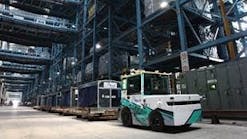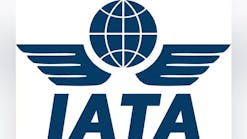Although the aviation industry, particularly commercial airlines, suffered significant setbacks as a result of the COVID-19 pandemic, passengers are expected to return to the skies soon. And with anticipated growth on the horizon, the urgency to reduce the industry’s environmental impact is increasing also.
Established with the goal of helping the aviation industry reduce carbon emissions and encouraging the adoption of sustainable aviation fuel (SAF), members of the U.S. House of Representatives announced the introduction of the Sustainable Skies Act Thursday.
The bill was introduced by Congressman Brad Schneider of Illinois, along with Reps. Dan Kildee of Michigan and Julia Brownley of California.
“Airlines have made sustainability commitments to reduce their carbon emissions, and the SAF industry has demonstrated it is preparing to meet that demand,” Schneider said during the press conference conducted via Zoom. “But there is clear need for federal investment to help SAF producers scale up and ensure aviation can meet their goals. This tax legislation represents a well-calibrated, well-timed effort to kickstart SAF’s long-term viability.”
The members of congress were joined at press conference by several aviation stakeholders, including United Airlines CEO Scott Kirby, Airlines for America (A4A) CEO Nick Calio and the Environmental Defense Fund’s senior vice president for climate Nathaniel Keohane, among others. And support for the bill was expressed by industry organizations, including the National Air Transportation Association (NATA) and National Business Aviation Association (NBAA).
The bill would provide a $1.50 blenders tax credit for SAFs that demonstrate at least a 50 percent reduction in greenhouse gas emissions over their lifecycle, Schneider explained.
“And it would further incentivize fuels as they go above a 50 percent reduction,” he continued. “This legislation also has significant environmental safeguards.”
Schneider noted, for example, the bill would exclude palm fatty acid distillates (PFADs) as a feedstock.
“The Sustainable Skies Act would represent a huge leap forward on reducing the carbon emissions of the aviation sector,” he said.
Kirby called the challenge of reducing the aviation industry’s carbon footprint the biggest issue our generation needs to solve. But he expressed hope in the industry’s ability to work with organizations like the Environmental Defense Fund to find concrete solutions.
“There are some industries, like aviation, that are going to be hard to de-carbonize,” Kirby said, noting his airline’s work with electric aircraft and hydrogen fueled aircraft.
“Sustainable aviation fuel is, by far, the Number 1 alternative for us to do that. What this need is the government kick-start, the support, so we can create the infrastructure, do the R&D, commercialize and industrialize this sustainable aviation fuel industry,” he continued.
“This is a relatively small investment from the government to give an industry certainty, so the investment dollars can flow into that industry and become self-sustaining and become the real alternative to jet fuel.”
Putting climate change at the forefront of the airlines’ recovery is key, according to Keohane.
“We think scaling up the use of sustainable aviation fuels is a critical part of that, which is why the sustainable Skies Act is so important,” he said. “But if we’re going to do that, we need to make sure that those sustainable fuels are genuinely sustainable, that they genuinely help us move the world toward the goal of net-zero emissions – which is where we need to be to stabilize the climate.”
Calio noted A4A and its member airlines fully support the legislation.
“We currently contribute only 2 percent of the nation’s greenhouse gas emissions, and we’re proud of the record we’ve created over the last decades to get those greenhouse gas emissions down. But we’re keenly focused on getting them down further,” Calio said. “We’ve all agreed on net-zero by 2050. It’s a pledge we intend to keep.
“Sustainable aviation fuel is key, a critical component of that.”
Calio went on to say his organization would like to see $2 billion of SAF produced by 2030.
“That takes a big increase,” Calio acknowledged, “and this bill will go a long way in helping us get there.”
The desire to increase the production and use of SAF is not unique to the United States.
Last month, the European Business Aviation SAF Summit was conducted virtually. As part of the event, industry leaders shared their strategic vision to increase the use of SAF across Europe.
These goals include incentivizing both the SAF supply chain to promote steady market growth as well as additional research for further development of SAF technologies and feedstock. Presenters also noted the importance of prioritizing SAF and increasing capacity, and the need to support systems that allow operators to buy SAF.
What’s more, the SAF Coalition has produced a sustainable aviation fuel guide to further inform industry leaders about the steps we can take to reduce emissions and limit aviation’s impact on the environment. More information about this important topic can be found at www.futureofsustainablefuel.com.







